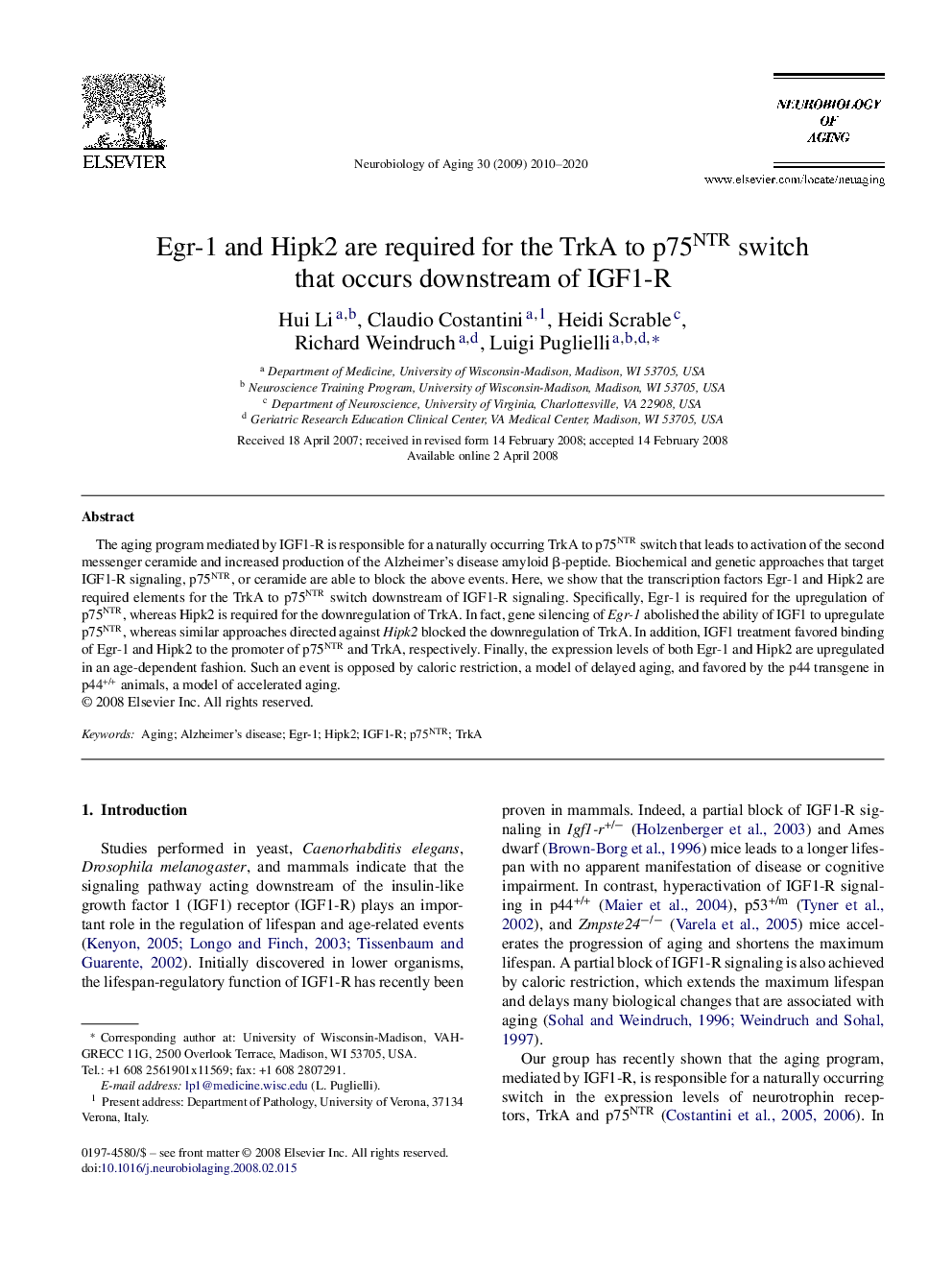| کد مقاله | کد نشریه | سال انتشار | مقاله انگلیسی | نسخه تمام متن |
|---|---|---|---|---|
| 328705 | 1433627 | 2010 | 11 صفحه PDF | دانلود رایگان |

The aging program mediated by IGF1-R is responsible for a naturally occurring TrkA to p75NTR switch that leads to activation of the second messenger ceramide and increased production of the Alzheimer's disease amyloid β-peptide. Biochemical and genetic approaches that target IGF1-R signaling, p75NTR, or ceramide are able to block the above events. Here, we show that the transcription factors Egr-1 and Hipk2 are required elements for the TrkA to p75NTR switch downstream of IGF1-R signaling. Specifically, Egr-1 is required for the upregulation of p75NTR, whereas Hipk2 is required for the downregulation of TrkA. In fact, gene silencing of Egr-1 abolished the ability of IGF1 to upregulate p75NTR, whereas similar approaches directed against Hipk2 blocked the downregulation of TrkA. In addition, IGF1 treatment favored binding of Egr-1 and Hipk2 to the promoter of p75NTR and TrkA, respectively. Finally, the expression levels of both Egr-1 and Hipk2 are upregulated in an age-dependent fashion. Such an event is opposed by caloric restriction, a model of delayed aging, and favored by the p44 transgene in p44+/+ animals, a model of accelerated aging.
Journal: Neurobiology of Aging - Volume 30, Issue 12, December 2009, Pages 2010–2020